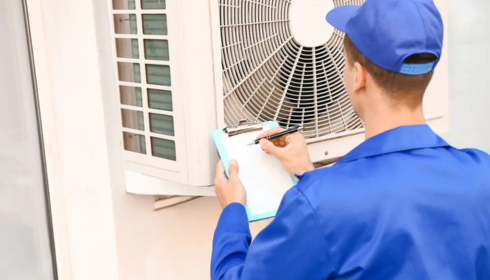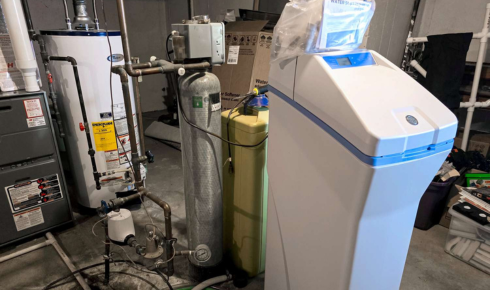
furnace replacement financing
There’s nothing like waking up on a frosty morning to find that your furnace has officially retired. No warning. No parting words. Just cold air blowing where warmth used to be. And while your instinct might be to panic or bundle up like you’re heading to Everest, you’re not alone in this.
HVAC systems don’t last forever—and they don’t wait for your savings account to look ready, either.
But here’s the thing: modern homeowners have options. Whether your furnace is gasping its last breath or your AC’s turned into a glorified box fan, you don’t have to choose between comfort and a financial meltdown. There are smart, stress-free ways to handle replacement costs without spiraling into debt or sacrificing your sanity.
Let’s talk about that.
When Your System Quits but Life Can’t
It always seems to happen at the worst time, doesn’t it? Just before guests arrive. Or in the middle of a heatwave. Or the night before your kid’s birthday party. Suddenly, you’re Googling emergency repairs, calculating worst-case scenarios in your head, and wondering how you’ll come up with the cash.
That’s when furnace replacement financing can be a game-changer.
It’s not about putting things off. It’s about giving yourself space to breathe financially while still handling the problem today. Financing allows you to get that much-needed heat back into your home—without emptying your wallet all at once.
AC Breakdowns Don’t Wait for Payday
Let’s flip to summer. Humidity’s so thick you could swim through it. The AC was hanging in there for weeks—until it wasn’t. You try resetting the thermostat. You clean the filter. Nothing works. The unit’s dead.
And the quote for a new one? Probably somewhere between $5,000 and $10,000, depending on your setup.
Unless you’ve been stashing cash like a squirrel preparing for winter, chances are, that number makes you sweat more than the heat does. And that’s where financing ac replacements can swoop in and save the day.
It’s not about luxury—it’s about survival. A working AC isn’t just nice to have. For many, especially the elderly or those with health conditions, it’s a necessity. Financing offers a bridge between need and affordability.
What You Can Expect from HVAC Financing
Here’s where things get practical. HVAC financing isn’t some complicated financial web. It’s typically a straightforward loan or payment agreement that splits the total cost of your new unit into smaller, digestible payments over a set period.
You can find plans with:
- 0% interest promotional periods (if you’ve got good credit)
- Low monthly payments over several years
- Deferred payment options if you need a few months of breathing room
Many HVAC installers offer in-house financing or partner with third-party lenders who specialize in home improvement loans. Others may work with larger programs like GreenSky, Wells Fargo, or Synchrony.
Here’s the best part: you can get your system installed immediately and sort out the payments after.
Real Talk: What to Watch Out For
Alright, a quick word of caution—because we don’t do sugarcoating here.
Not all financing deals are created equal. Before you sign anything, dig into the details:
- Is the interest rate fixed or variable?
- Are there fees hiding in the paperwork?
- Can you pay it off early without a penalty?
- What’s the total cost once interest is factored in?
Always ask. Always compare. And don’t rush. The goal isn’t just to get your HVAC replaced—it’s to do it smartly.
Why Some Folks Delay Replacements (And Why That’s Risky)
It’s tempting to “wait it out.” Maybe the unit will spring back to life. Maybe it’ll limp along another season. Or maybe you’re just avoiding the upfront cost.
But worn-down systems can be a money pit. They guzzle electricity, inflate your utility bill, and often break down at the worst possible time. Plus, they can become safety hazards—especially old furnaces with carbon monoxide risks.
If you’re putting off the inevitable, ask yourself: is the delay saving money, or quietly costing you more?
With central ac unit financing, you can finally stop patching up an old system and start fresh with a unit that’s efficient, quiet, and reliable.
Don’t Let Credit Score Fear Freeze You
Now, what if your credit score isn’t exactly brag-worthy?
Don’t let that hold you back. There are still options. Some lenders specialize in helping homeowners with average or even poor credit scores. The terms might not be as flashy (read: higher interest rates), but they’re still workable. And some contractors even offer no credit check payment plans.
You can also explore:
- Energy efficiency rebates from your utility company or government programs
- Home equity lines of credit
- Personal loans from smaller community banks or credit unions
The bottom line? You have choices. Don’t assume you’re stuck just because your credit isn’t perfect.
Your Home Deserves to Be Comfortable
You spend a huge portion of your life at home—sleeping, relaxing, sharing meals, raising kids, making memories. It shouldn’t feel like a sauna in July or an ice cave in January.
And yet, people push through discomfort every day because they think comfort is a luxury they can’t afford.
But it doesn’t have to be that way.
With modern financing tools, HVAC replacement doesn’t have to wreck your budget. It can actually fit into your financial life, in a way that’s balanced and responsible.
Final Thoughts (With a Breath of Fresh Air)
There’s no right time for an HVAC system to call it quits. But there is a right way to handle it when it does.
Whether it’s a tired furnace in the dead of winter or an AC unit gasping during a heatwave, you don’t need to face it alone—or unaided. From furnace replacement financing to smart central ac unit financing, the solutions are out there. All you need is a little guidance, a few good questions, and a bit of breathing room.
So next time your home gets uncomfortably silent… or too noisy from window fans… don’t just grit your teeth and wait. Explore your financing options. Regain control. And remember: home is where you should feel safest, warmest—or coolest—depending on the season.



